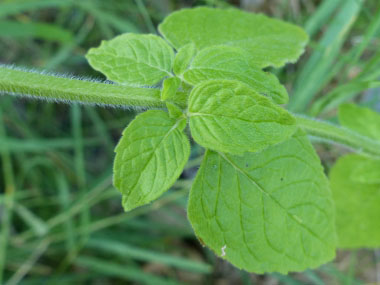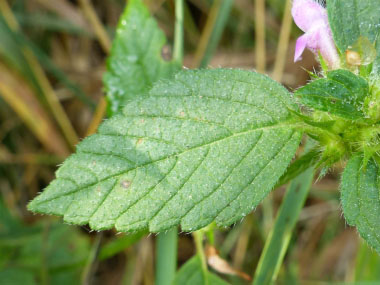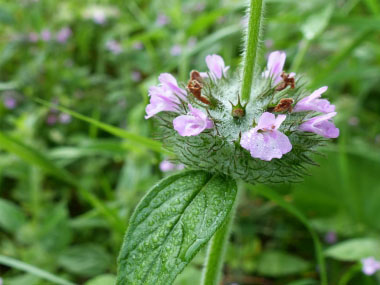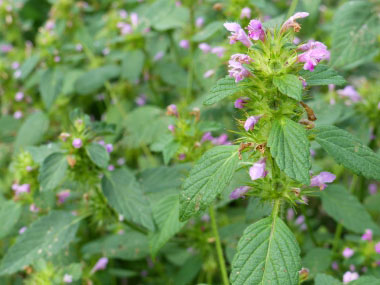






To support our efforts please browse our store (books with health benefits, etc.).
Wild basil is an herbaceous wildflower in the Lamiaceae (mint) family. As many mints, wild basil has many medicinal qualities. The plant is aromatic, astringent, cardiotonic, carminative, diaphoretic and expectorant. A wild basil infusion helps to overcome weak digestion. A perennial plant, wild basil lives for longer than two years. Besides it aesthetic qualities and tendency to attract wildlife, wild basil has many practical applications. It is most well known as a cooking ingredient that can be used to add flavour to a wide variety of dishes. However, it can also be used in the preparation of dyes. Despite the purple hue of its flowers, the dyes it produces is typically brown or yellow. It is native to North America.
Distinguishing Features
This plant is easy to recognise due to its slightly square stem and oval, toothed leaves. It produces whorls of delicately-coloured flowers at the top of each stem. The flowers range in hue from rich purple to vibrant violet to subtle pink. Each of these flowers has five petals that form a loose bell shape and five exquisite stamens, which add to the wild basil’s unique and remarkable appearance.
Flowers
The corolla is irregular, 10 to 20 mm (0.4 to 0.8”) long, fused, long-tubed, and the upper part is hairy. Upper lip flat, with notched tips; lower lip 3-lobed, central lobe slightly larger than lateral lobes, with notched tips–2-lobed. Flowers have four stamens, of which 2 are long and 2 are short. It typically flowers from late June to late August depending on geographical location. The flowers range in hue from rich purple to vibrant violet to subtle pink.
 Fields
of Nutrition has medicinal benefits and vitamin/mineral content of Wild Basil.
Fields
of Nutrition has medicinal benefits and vitamin/mineral content of Wild Basil.
Leaves
Leaves are opposite, and short-stalked. They are blade ovate to elliptic, with entire margins or shallow and blunt teeth; both sides are hairy.
Height
On average, wild basil grows 20 to 60 cm (8 to 25”). The stem is often unbranched, 4-edged and hairy.
Habitat
This plant grows on the outer edges of forests, in hedgerows, in meadows, dry grassy places and in heaths.
Edible Parts
Leaves are edible, fresh or dried as a flavouring in cooked foods or fresh as a flavouring in salads. A sweet and aromatic herb tea is made from the fresh leaves.
Other Name
Satureja vulgaris.
Winter Survival Food Handbook

PDF Plant Magazines
Types of Wild Food
Geographic Zones Seasons
Disclaimer
EdibleWildFood.com is informational in nature. While we strive to be 100% accurate, it is solely up to the reader to ensure proper plant identification. Some wild plants are poisonous or can have serious adverse health effects.
We are not health professionals, medical doctors, nor are we nutritionists. It is up to the reader to verify nutritional information and health benefits with qualified professionals for all edible plants listed in this web site. Please click here for more information.
Why Edible Wild Food?
- Food costs are rising
- Free, wild food is readily abundant
- Wild food adds nutrition to your diet
- Wild food can help treat various medical conditions





